
Thomas Robinson, 2nd Baron Grantham PC was a British statesman. He notably served as Foreign Secretary between 1782 and 1783.
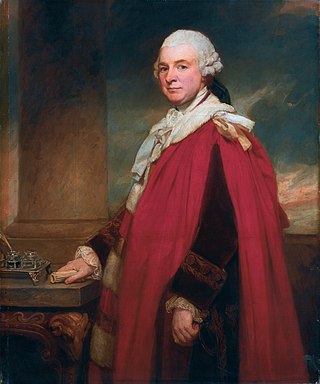
Philip Yorke, 2nd Earl of Hardwicke, PC, FRS, styled Viscount Royston between 1754 and 1764, was an English politician and writer.
The peerage title Earl of Kent has been created eight times in the Peerage of England and once in the Peerage of the United Kingdom. In fiction, the Earl of Kent is also known as a prominent supporting character in William Shakespeare's tragedy King Lear.

Earl of Hardwicke is a title in the Peerage of Great Britain. It was created in 1754 for Philip Yorke, 1st Baron Hardwicke, Lord High Chancellor of Great Britain from 1737 to 1756. He had already been created Baron Hardwicke, of Hardwicke in the County of Gloucestershire, in 1733, and was made Viscount Royston at the same time as he was given the earldom. These titles were also in the Peerage of Great Britain.
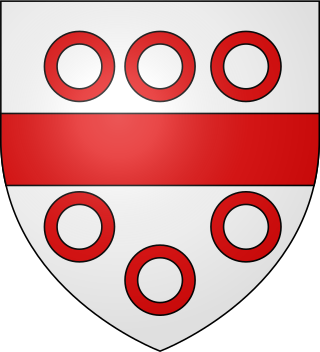
Baron Lucas is a title that has been created twice in the Peerage of England. The second creation is extant and is currently held with the title Lord Dingwall in the Peerage of Scotland.

Thomas Philip de Grey, 2nd Earl de Grey, 3rd Baron Grantham, 6th Baron Lucas, KG, PC, FRS, styled as The Hon. Thomas Robinson until 1786 and as Lord Grantham from 1786 to 1833, of Wrest Park in the parish of Silsoe, Bedfordshire, was a British Tory statesman. He changed his surname to Weddell in 1803 and to de Grey in 1833.

Earl de Grey, of Wrest in the County of Bedford, was a title in the Peerage of the United Kingdom.

Marquess Grey is a title that was created in the Peerage of Great Britain on 19 May 1740 for Henry Grey, 1st Duke of Kent, with remainder to the male issue of his body and in default thereof to his granddaughter, the Honourable Jemima Campbell, and the heirs male of her body. The Duke of Kent died only two weeks after the creation of the marquessate, at which point the dukedom and most of its subsidiary titles became extinct.

Marquess of Ripon, in the County of York, was a title in the Peerage of the United Kingdom. It was created in 1871 for the Liberal politician George Robinson, 2nd Earl of Ripon.

Henry Grey, 1st Duke of Kent, KG, PC was a British politician and courtier. None of his sons outlived him, so his new title became extinct on his death. Though the house he built at Wrest Park in Bedfordshire has gone, parts of his very grand garden have survived relatively untouched.

Wrest Park is a country estate located in Silsoe, Bedfordshire, England. It comprises Wrest Park, a Grade I listed country house, and Wrest Park Gardens, also Grade I listed, formal gardens surrounding the mansion.

Silsoe is a village and civil parish in Bedfordshire, England. The village used to be on the main A6 road but a bypass around the village was opened in 1981 at a cost of £1.6m.
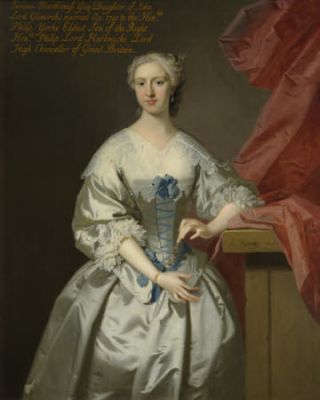
Jemima Campbell, 2nd Marchioness Grey and Countess of Hardwicke or Jemima Yorke, 2nd Marchioness Grey; 9 October 1723 – 10 January 1797), was a British peeress.
Grey is a surname. It may refer to:
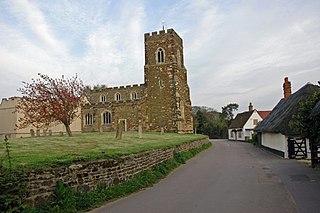
Flitton is a village and former civil parish, now in the parish of Flitton and Greenfield, in the Central Bedfordshire district, in the ceremonial county of Bedfordshire, England. The village derives its name from the River Flit which flows close by it. It is notable primarily as the home of the De Grey Mausoleum adjacent to the St John the Baptist Church. Richard Milward, the editor of Selden's Table Talk, was born at Flitton in 1609. There are two pubs, The White Hart by the church hall and Jolly Coopers at Wardhedges. The annual ‘Gala’ and ‘Potato Race’ are two of the main events that happen in the village. In 1961 the parish had a population of 572. On 1 April 1985 the parish was abolished to form "Flitton & Greenfield", parts also went to Flitwick, Pulloxhill and Westoning.
Henry Grey, 8th Earl of Kent of Wrest Park, Bedfordshire was Earl of Kent from 1623 to his death.
Henry Grey, 10th Earl of Kent, known as Lord Ruthin from 1639 to 1643, was an English politician who sat in the House of Commons in 1640 and succeeded to the title Earl of Kent in 1643.

The Grey family is an ancient English noble family from Creully in Normandy. The founder of the family was Anchetil de Greye, a Norman chevalier and vassal of William FitzOsbern, 1st Earl of Hereford, one of the few proven companions of William the Conqueror known to have fought at the Battle of Hastings in 1066.
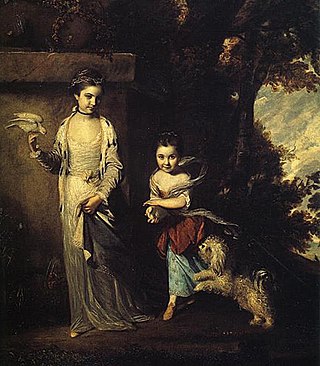
Amabel Hume-Campbell, 1st Countess de Grey, 5th Baroness Lucas was a British diarist and political writer who was a countess and baroness in her own right. Had she been male, she would have served in the House of Lords as a Whig. She wrote particularly about the French Revolution.

Jemima Grey, Duchess of Kent, formerly Jemima Crew, was the first wife of Henry Grey, 1st Duke of Kent.















